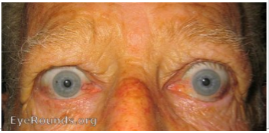As we begin a new year, it is important to prioritise our eye health for good vision and overall wellness. Incorporating simple yet effective practices into your daily routine will help you maintain and improve your vision in the coming months. Here are ten practical strategies to help you achieve and maintain healthy eyesight:
- Regular eye exams: Schedule comprehensive eye exams with an optometrist at least once a year. These check-ups are critical for detecting potential vision problems early on, allowing for timely interventions and preventing further complications. Early detection can often mean easier treatment and better outcomes.
- Balanced diet for eye health: Maintain a diet that’s rich in nutrients beneficial for eye health. Foods high in antioxidants, vitamins (such as A, C, and E), omega-3 fatty acids, and zinc are particularly advantageous. Include items like leafy greens, fish, citrus fruits, nuts, and carrots in your meals to nourish your eyes and maintain their health.
- Stay hydrated: Adequate hydration is important not just for general health, but also for keeping the eyes moist and lubricated. Drink plenty of water throughout the day to keep your body, including your eyes, hydrated.
- Combat digital eye strain: Limit screen time and take regular breaks when using electronic devices in today’s digital era. Follow the 20-20-20 rule: every 20 minutes, focus your attention on something 20 feet away for about 20 seconds. This technique aids in the reduction of eye strain and tiredness (fatigue) caused by extended screen use.
- Protect your eyes from UV rays: Wear sunglasses that provide protection against harmful UV rays when in outdoors. UV exposure can lead to various eye conditions, including cataracts and macular degeneration. Additionally, use appropriate protective eyewear during sports or when working in environments with potential eye risks.
- Ensure adequate lighting: Proper lighting is essential for minimizing eye strain when reading or working. Adjust the lighting to avoid glare on screens and surfaces. An equally lighted environment aids in the reduction of eye strain and discomfort.
- Quit smoking: Smoking is harmful to eye health and has been linked to a variety of eye conditions, including cataracts and age-related macular degeneration. Quitting smoking decreases the risk of visual impairment greatly and helps to overall health improvement.
- Optimize your workstation for eye health: To reduce strain, place your computer screen at an appropriate distance (about an arm’s length away) and slightly below eye level. Use an anti-glare screen and adjust font sizes to ensure comfortable reading. Taking regular breaks to rest your eyes is essential especially while using a screen for an extended period of time.
- Practice eye exercises: Engage in eye exercises to strengthen eye muscles and maintain flexibility. Simple activities such as focusing on close and far objects or rotating the eyes can help prevent vision degradation and relieve strain from extended screen use or reading.
- Prioritize quality sleep: Adequate and quality sleep is essential for overall health, including eye health. Lack of sleep can result in dry eyes and eye fatigue. Ensure you get enough rest to allow your eyes to relax and recover.
Adopting these behaviours as part of your daily routine will help you maintain healthy vision in this year and years ahead. Consistency and dedication to these practices will be important in protecting your eyesight and overall well-being. Remember, proactive care today ensures clearer vision tomorrow.




